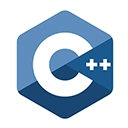Proper documentation is essential for understanding and maintaining your C++ code. In this guide, we'll explore the use of comments and Doxygen to document your code effectively, complete with sample code and explanations.
1. Inline Comments
Use inline comments to provide brief explanations for specific lines of code. This helps you and others understand the purpose and logic of the code. For single-line comments, you can use double slashes (//):
int x = 5; // Initialize the variable 'x' with the value 5
2. Function Comments
For functions, provide a comment block just above the function declaration. Explain the purpose, input parameters, and return values. Use Doxygen-style comments for functions:
/**
* Calculate the area of a rectangle.
*
* @param length The length of the rectangle.
* @param width The width of the rectangle.
* @return The area of the rectangle.
*/
int calculateRectangleArea(int length, int width) {
return length * width;
}
3. Class Comments
When defining classes, add a comment block that describes the class's purpose, attributes, and methods. Follow Doxygen-style comments for classes:
/**
* Represents a Student class with basic information.
*/
class Student {
public:
/**
* Construct a Student object with a name and age.
*
* @param name The name of the student.
* @param age The age of the student.
*/
Student(const std::string& name, int age);
/**
* Get the name of the student.
*
* @return The name of the student.
*/
std::string getName() const;
/**
* Get the age of the student.
*
* @return The age of the student.
*/
int getAge() const;
private:
std::string name;
int age;
};
4. File Comments
At the beginning of each source code file, provide a comment block that briefly explains the file's purpose and, if applicable, the author and creation date:
/**
* @file main.cpp
* This file contains the main program.
* Author: John Doe
* Date: 2023-10-20
*/
#include <iostream>
int main() {
// Your code here
return 0;
}
5. Using Doxygen
Doxygen is a powerful documentation generator for C++ code. By adding Doxygen-style comments to your code, you can generate professional-looking documentation. To generate documentation using Doxygen, follow these steps:
Install Doxygen on your system if you haven't already.
Create a Doxyfile configuration file for your project. You can run doxygen -g to generate a template Doxyfile.
Modify the Doxyfile to specify your project details, input files, and output directory.
Run doxygen Doxyfile to generate the documentation. This will create an HTML or other format documentation in the specified output directory.
Conclusion
Proper documentation using comments and tools like Doxygen makes your C++ code more understandable and maintainable. It helps both you and other developers working on the project to quickly grasp the code's purpose and usage.

